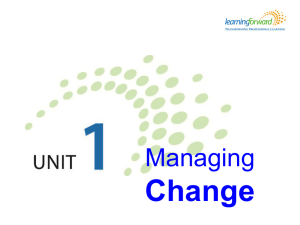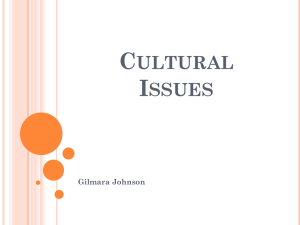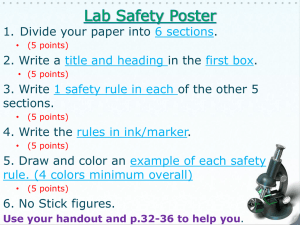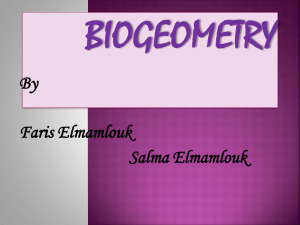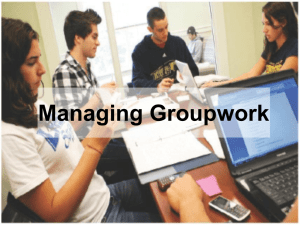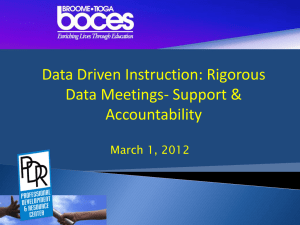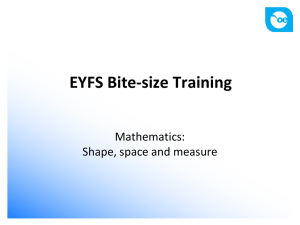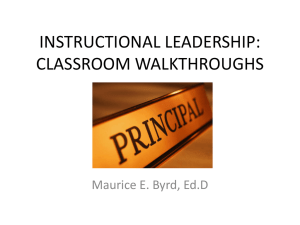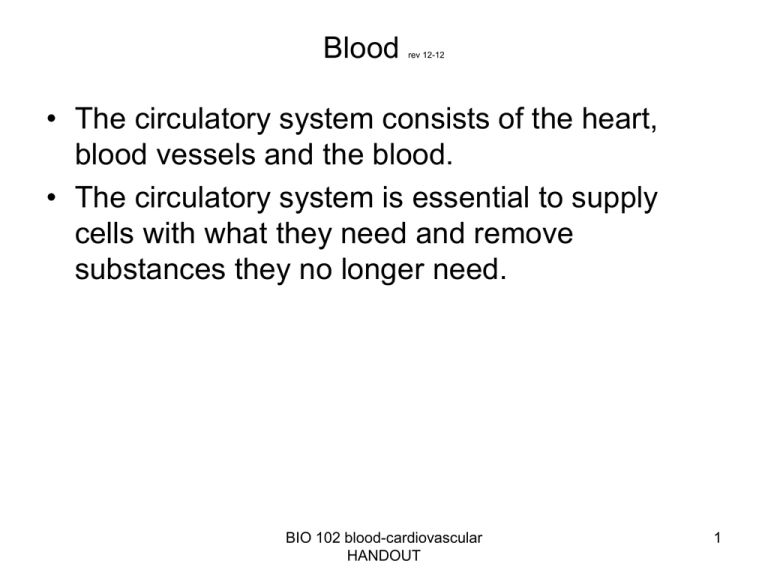
Blood
rev 12-12
• The circulatory system consists of the heart,
blood vessels and the blood.
• The circulatory system is essential to supply
cells with what they need and remove
substances they no longer need.
BIO 102 blood-cardiovascular
HANDOUT
1
The Functions of Blood
Blood is actually a liquid body tissue and is classified as a
connective tissue; we have ~ 5 liters of blood
Blood carries out three essential tasks:
• Transportation: oxygen, carbon dioxide,
nutrients, waste, hormones
• Regulation: body temperature, volume of water
in the body, pH of body fluids
• Defense: contains specialized defense cells to
protect against illness and excessive bleeding
through clotting mechanisms
• necessary for homeostasis.
BIO 102 blood-cardiovascular
HANDOUT
2
Blood Components
All blood cells and platelets develop from stem cells in red
bone marrow.
Blood is made up of:
• Formed elements (cellular components--45%):
– RBCs or erythrocytes; most abundant cell type; primarily is a
carrier of oxygen and carbon dioxide
– WBCs or leukocytes
– Platelets
• Plasma (liquid and dissolved solutes--55%):
–
–
–
–
–
–
Water
Electrolytes (ions of elements)
Proteins (albumins, globulins, clotting proteins)
Hormones
Gases (oxygen and carbon dioxide)
Nutrients and wastes
BIO 102 blood-cardiovascular
HANDOUT
3
RBC (erythrocytes) Production=Erythropoiesis
• Stem cells develop into immature cells called
erythroblasts.
– s become erythrocytes in about 1 week
– lose nucleus and organelles as mature so can’t
reproduce
– New RBC must develop (from stem cells) because
with no nucleus, RBC can’t accomplish any cellular
activities and wear out quickly
– Old or damaged RBC are removed from blood and
destroyed in the liver and spleen by macrophages in
a process called phagocytosis.
• Many cell components are recycled: hemoglobin is
broken up into amino acids, iron atoms returned to
bone marrow, heme group converted to bilirubin
BIO 102 blood-cardiovascular
HANDOUT
4
Red Blood Cells
– contain hemoglobin, a protein which
carries oxygen and carbon dioxide
– live for approximately 4 months.
– As they mature, expel nucleus so can carry
more hemoglobin.
– also assume a biconcave shape
– makes them more flexible and allows more
to fit into blood vessels to increase the
surface area available for gas exchange.
BIO 102 blood-cardiovascular
HANDOUT
5
Hemoglobin Molecule
• Hemoglobin is an oxygen binding protein;
consists of 4 polypeptide chains coiled
around a “heme group”
• The “heme group” has an iron atom in
center. This combines easily with oxygen at
the lungs AND lets go of the oxygen when
reaching body tissues.
• When hemoglobin combines with oxygen, it
turns red. This is why blood is red.
BIO 102 blood-cardiovascular
HANDOUT
6
Hematocrit
• is a measure of the oxygen carrying capacity
of blood
• is obtained by spinning down blood and
measuring the amount of formed elements
• RBCs make up nearly 99% of formed
elements
• Normal hematocrit
– men: 43-49%
women: 37-43%
BIO 102 blood-cardiovascular
HANDOUT
7
• Regulation of RBC production is a negative
feedback control loop
• Cells in the kidneys check the availability of
oxygen. If levels are low, these cells are
signaled to secrete the hormone erythropoietin.
This is carried to red bone marrow where more
RBC are produced.
• When the oxygen levels are appropriate, the
kidney cells stop production of erythropoietin.
BIO 102 blood-cardiovascular
HANDOUT
8
White Blood Cells-WBC or leukocytes
Functions: protection from infection, regulation of the
inflammatory reaction
• Types:
– Granular:
• neutrophils, eosinophils, basophils
• Mature in the red bone marrow
• Granules are actually vesicles filled with proteins
and enzymes
– Agranular:
• lymphocytes, monocytes
• monocytes mature in red bone marrow;
lymphocytes mature in the thymus gland
BIO 102 blood-cardiovascular
HANDOUT
9
Circulating levels of WBC rise whenever the body
is threatened by viruses, bacteria, or other
health challenges
• Each type of WBC can produce chemicals which
travel, via the blood, to the bone marrow where
they stimulate the production of more WBC
Most WBC remain in the blood vessels; some
circulate in the intercellular fluid and the
lymphatic system.
BIO 102 blood-cardiovascular
HANDOUT
10
Types of WBC
• Neutrophils-most common WBC
– see in acute infections; first WBC to
combat infection
• main function is phagocytosis (bacteria and
fungi)
• Eosinophils- approximately 2-4% of WBCs
• see in parasitic infections and in allergic
reactions
BIO 102 blood-cardiovascular
HANDOUT
11
• Basophils- rare
– initiate the inflammatory response—
granules in the cell cytoplasm contain histamine
which starts the inflammatory response
• Lymphocytes-second most common WBC;
found in tonsils, blood, spleen, lymph nodes,
thymus
• manufactures antibodies and eliminates
anything foreign to the body
• play crucial role in immune response
• Monocytes
• active in phagocytosis
• elevated in chronic infections
BIO 102 blood-cardiovascular
HANDOUT
12
Platelets
• are small cell fragments; play essential role in
process of blood clotting
• platelet production regulated by hormone
thrombopoietin
• platelets are stable as they circulate, but when
encounter a “rough surface,” form a temporary plug
and initiate the clotting mechanism
• body also requires vitamin K for normal blood clotting
BIO 102 blood-cardiovascular
HANDOUT
13
Clotting process or hemostasis
• damage to a blood vessel triggers a vasospasm or
constriction of the damaged blood vessel
– platelets in the area swell, become sticky, adhere to
damaged area and produce plug which becomes clot
– platelets also release chemicals to help in clot
formation
• prothrombin activator converts prothrombin (a
plasma protein) into thrombin
• thrombin converts the fibrinogen molecules to
fibrin which traps blood cells, forms clot and seals
hole
BIO 102 blood-cardiovascular
HANDOUT
14
Blood Typing
• Each of us has one of 4 types of blood--A, B, AB, O-along with some specific glycoproteins or antigens
– cells have surface proteins that immune system can
recognize as “self” or “non-self”. The immune system
will recognize foreign cells as non-self .
– An antigen is a substance that can mobilize the
immune system to defend itself. Antigens provide a
biological “signature” of a person’s blood type.
– The immune system builds antibodies---an opposing
protein that can kill the non-self cells.
– Antibodies can cause foreign blood cells to stick
together so they can be destroyedthe transfused
blood cells stick together within our blood vessels.
– can be fatal
BIO 102 blood-cardiovascular
HANDOUT
15
• Another antigen found in blood is the Rh
antigen--if you have it, your blood is
classified as Rh positive. If you do not have
this, your blood is classified as Rh negative.
Blood Typing Tests
– Based on the interaction between antigens
and antibodies
– performed with anti-sera which contain
high concentrations of anti-A and anti-B
antibodies
– blood samples are mixed with each anti-sera
BIO 102 blood-cardiovascular
HANDOUT
16
– if agglutination or clumping occurs with
anti-A sera, you have type A blood
anti-B sera, you have type B blood
– if clumping occurs with both anti-A and
anti-B, you have type AB blood
– if no clumping occurs with either anti-A and
anti-B sera, you have type O blood
• ANTIBODIES you have in your body are
opposite of your blood type
BIO 102 blood-cardiovascular
HANDOUT
17
Blood Typing
Blood
Type
Reaction
Anti-A Serum Anti-B Serum
Antibody
Type
Type A
Agglutination
Anti-B
antibody
Type B
No
Agglutination
Agglutination
Type AB
Agglutination Agglutination
Type O
No
Agglutination
No
Agglutination
Anti-A
antibody
No antibodies
against major
blood groups
Anti-A & Anti-B
No
antibodies
Agglutination
BIO 102 blood-cardiovascular
HANDOUT
18
Blood Disorders
• Carbon monoxide poisoning: competes with
oxygen
• Anemia: reduction in oxygen-carrying capacity
Types of Anemia
• Iron deficiency anemia occurs when insufficient iron
ingested so fewer hemoglobin molecules are available.
• Aplastic anemia where bone marrow doesn’t produce
enough stem cells
• Hemorrhagic anemia is caused by extreme blood loss
BIO 102 blood-cardiovascular
HANDOUT
19
• Pernicious Anemia body is unable to absorb
vitamin B12 from the digestive tract. The body
uses B12 to produce normal RBC.
• Sickle cell Anemia: inherited disorder in
which RBC become sickle or crescent shaped
when oxygen concentration of blood is low.
This shape doesn’t travel easily through blood
vessels because the cells clump, get stuck in
the vessels and cause a great deal of pain.
– Sickle shaped cells can’t carry normal
amount of oxygen.
BIO 102 blood-cardiovascular
HANDOUT
20
Polycythemia describes an abnormally high RBC
count
– thickness of blood increases and slows down
flow of blood.
– Treatment:
• phlebotomy with return of plasma to dilute the
blood
• Drink a lot of water
BIO 102 blood-cardiovascular
HANDOUT
21
• Leukemia is form of cancer with uncontrolled production
of abnormal or immature WBC in bone marrow. This
crowds out the production of normal WBC, RBC, and
platelets.
• Multiple myeloma: cancer where abnormal plasma cells
in bone marrow increase production. These cells are
important for the manufacture of antibodies.
• Mononucleosis is a contagious infection of lymphocytes
linked to the Epstein-Barr virus.
– Spread by oral route; swollen spleen
• Septicemia also called “blood poisoning”. It occurs
when organisms invade the blood, overpower our body’s
defenses and multiply rapidly in the blood.
BIO 102 blood-cardiovascular
HANDOUT
22
• Thrombocytopenia is reduction in the number
of platelets
• Hemophilia: inherited condition caused by
deficiency of one or more clotting factors (known
as clotting factor VIII)
– When a blood vessel is damaged, blood either clots
very slowly or not at all
BIO 102 blood-cardiovascular
HANDOUT
23
The Cardiovascular System
Blood Vessels
Arterial system
Structure:
• Endothelium: thin inner layer of squamous epithelial
cells
• Middle: thick layer of smooth muscle woven with elastic
connective tissue
• outer layers: tough supportive layer of connective tissue,
primarily collagen
– anchors vessels to surrounding tissues and helps protect them
from injury
• Aneurysm: ballooning of the arterial wall
– Endothelium of blood vessel becomes damaged and blood
seeps through and accumulates between the middle and outer
layers of the blood vessel
BIO 102 blood-cardiovascular
HANDOUT
24
The Cardiovascular System
• Functions:
– Arteries: carry blood away from heart
– Need thicker muscular wall due to pressure of blood
being pumped by aorta
• Walls keep blood moving during diastole
– Elastic walls stretch during systole and rebound
during diastole thus pushing blood through arteries
• Because blood pressure is less by the time blood
has reached the arterioles (smallest arteries), they
do not have the outermost layer of connective
tissue and the muscular layer is thinner.
BIO 102 blood-cardiovascular
HANDOUT
25
– Capillaries: thin walled blood vessels; branching
design allows exchange of gases, nutrients, waste,
and defensive cells between vessel and tissue
– are one epithelial cell thick (have no muscle in
their wall)
• are so thin that blood cells can only pass through
them in single file
• Precapillary sphincter, a band of smooth
muscle, is located where the arteriole meets
the capillary and controls the blood flow to
each capillary
– vasoconstriction
– vasodilation
BIO 102 blood-cardiovascular
HANDOUT
26
Venous system
• Functions: carry blood to heart
• Structure: veins: three layers, thin-walled
– like the walls of arteries, the walls of veins consist
of 3 layers of tissue.
• Outer 2 layers are much thinner than arteries
• veins have larger diameters (lumen) than
arteries
– pressure in veins is much lower than that in
arteries which is why their walls are not as strong
as arteries
• Blood pressure lower in veins than in capillaries
– veins can act as a blood volume reservoir
BIO 102 blood-cardiovascular
HANDOUT
27
– larger diameter of veins allows them to stretch to
accommodate large volumes of blood at low
pressures
– because veins can stretch, is more difficult for
them to return blood to the heart against force of
gravity
– people who spend a lot of time on their feet may
get varicose veins
BIO 102 blood-cardiovascular
HANDOUT
28
Factors which help veins to return blood to heart
• Contraction of skeletal muscles
• as we move and muscles contract and relax, they
press against veins and help push blood to heart
– the work of the skeletal muscles helps valves
pump blood. Called a skeletal muscle pump
– One-way valves—blood can only flow in one
direction
• Open passively to allow blood to move toward
heart and close whenever blood flows backward
BIO 102 blood-cardiovascular
HANDOUT
29
Pressure changes associated with breathing
– movements associated with breathing help pump
blood. This is called a respiratory pump and
helps to push blood from the abdomen to chest
and to heart.
• when we breathe, pressure changes in the
thoracic and abdominal cavities
• during inhalation, abdominal pressure
increases and squeezes abdominal veins
• simultaneously, pressure within the thoracic
cavity decreases which dilates the thoracic
veins and thus propels the blood.
BIO 102 blood-cardiovascular
HANDOUT
30
Lymphatic System
----works closely with the circulatory system to maintain
proper volume of blood and interstitial fluid;
– Picks up substances in interstitial fluid that are too
large to diffuse into capillaries
• Lipid droplets absorbed during digestion
• Invading organisms
– Transports these to larger lymphatic vessels which
return fluid to veins near heart
• also functions in immune system
• Structure:
– Lymphatic vessels
– Lymph
BIO 102 blood-cardiovascular
HANDOUT
31
The Heart
Structure: composed of cardiac muscle enclosed
by pericardium
– Pericardium protects the heart, anchors it to
surrounding structures, prevents it from
overfilling with blood
– Pericardial cavity separated from heart
muscle; contains a tiny amount of fluid to
allow heart and pericardium to glide smoothly
every time heart contracts
– Heart beat rate determined by the SA Node
Sino-Atrial node
BIO 102 blood-cardiovascular
HANDOUT
32
The Heart
• Layers: Epicardium: thin, outermost layer made
up of epithelial and connective tissue
– Myocardium: thick layer primarily of cardiac
muscle
– Endocardium: innermost layer of endothelial
tissue resting on a layer of connective tissue;
is continuous with the endothelium that lines
blood vessels
BIO 102 blood-cardiovascular
HANDOUT
33
The Heart
• 4 Chambers: two atrias, two ventricles
– Atrias are on the top
– Ventricles are the 2, more muscular chambers
on the bottom
• Septum, a muscular partition, separates the right
and left sides of the heart
BIO 102 blood-cardiovascular
HANDOUT
34
The Heart
• Valves: prevent blood from flowing backward
– Two atrioventricular valves: tricuspid (right)
and bicuspid (mitral--left)
• Chordae tendinae: strands of connective
tissue which connect to muscular
extensions (papillary tendons or muscles)
of ventricular wall
• prevent the valves from being pushed
backward
– Two semilunar valves: pulmonary and aortic
• Have 3 flaps
BIO 102 blood-cardiovascular
HANDOUT
35
Lung
Lung
BIO 102 blood-cardiovascular
HANDOUT
36
Flow of blood through the heart:
• Deoxygenated blood through the vena cava
to the right atrium
• Deoxygenated blood through the right
atrioventricular valve to the right ventricle
• Deoxygenated blood through the pulmonary
semilunar valve to the pulmonary trunk and
the lungs
• Oxygenated blood through the pulmonary
veins to the left atrium
• Oxygenated blood through the left
atrioventricular valve to the left ventricle
BIO 102 blood-cardiovascular
HANDOUT
37
• Oxygenated blood through the aortic
semilunar valve to the aorta
Blood flow through the tissues:
• Oxygenated blood through branching
arteries and arterioles to the tissues
• Oxygenated blood through the arterioles to
capillaries
• Deoxygenated blood from capillaries into
venules and veins
• Ultimately to the vena cava and into the
right atrium
BIO 102 blood-cardiovascular
HANDOUT
38
Cardiac Anatomy Quiz
BIO 102 blood-cardiovascular
HANDOUT
39
• Coronary arteries supply the heart muscle with
blood (myocardium is too thick to be supplied with
oxygen and nutrients by diffusion from blood passing
through it)
• Coronary arteries branch from the aorta as it
leaves the heart and circle the heart’s surface
• Cardiac veins bring the blood back to right
atrium
BIO 102 blood-cardiovascular
HANDOUT
40
Cardiac cycle is a measure of blood pumped with
each beat multiplied by number of heart beats
per minute
1. Heart relaxes and all four chambers fill; blood is
sucked in as heart muscle expands
2. Atrial contraction: more blood into the already filled
ventricles
3. Ventricular contraction: blood is ejected into the
aorta and pulmonary trunk
• Systole refers to contraction
• Relaxation of the entire heart = diastole
BIO 102 blood-cardiovascular
HANDOUT
41
Heart Sounds and Heart Valves
• Lub-dub
– Lub signals the closure of the 2 AV valves
– Dub signals the aortic and pulmonary
semilunar valves closing
• Heart murmurs are created by obstructions
blood encounters as it flows through heart
BIO 102 blood-cardiovascular
HANDOUT
42
Cardiac conduction system is a group of
specialized cardiac muscle cells that
initiate and distribute electrical impulses
throughout heart
– is responsible for the coordinated sequence of
the cardiac cycle which spreads from atria to
ventricles
– Consists of: sinoatrial node, atrioventricular
bundle and its 2 branches and Purkinje
fibers
BIO 102 blood-cardiovascular
HANDOUT
43
• Sinoatrial (SA) node
– Provides the stimulus that starts the heartbeat
• Is a small mass of cardiac muscle cells close to
where the right atrium and the superior vena cava
meet
• Emits an electrical impulse that travels across both
atria stimulating waves of contraction
• Is called the cardiac pacemaker because it
initiates the heartbeat
• Atrioventricular (AV) node
– Located between the atria and ventricles
– Muscle fibers are smaller in diameter which causes a
slight delay of the electrical impulse. This allows the
atria time to contract and empty their blood into the
ventricles before the ventricles contract
BIO 102 blood-cardiovascular
HANDOUT
44
– Atrioventricular bundle:
• Located in the septum between the 2 ventricles
• These fibers branch and extend into Purkinje
fibers, smaller fibers that carry the impulse to all
cells in the ventricular myocardium
• The impulse travels down the septum (to the lower
part of the ventricles) and then spreads rapidly
upward through the purkinje fibers, the lower part
of the ventricles contract first and squeeze blood
into the pulmonary trunk and the aorta.
BIO 102 blood-cardiovascular
HANDOUT
45
Electrocardiograms (EKG/ECG)
We can track the electrical activity of the heart as
weak electrical differences in voltage with an
EKG
– Place “leads” or electrodes at the chest, wrists
and ankles
• Three formations:
– P wave: impulse across atria
– QRS complex: spread of impulse down
septum, around ventricles in Purkinje fibers
(this occurs just as the ventricles start to
contract)
– T wave: end of electrical activity in ventricles
BIO 102 blood-cardiovascular
HANDOUT
46
Arrhythmias are an abnormal rhythm or rate of
heartbeat
– Some arrhythmias are common and not
potentially dangerous
– ventricular fibrillation is leading cause of
cardiac death
• Can treat with medication or “cardioversion” with
an electric shock or artificial pacemakers
BIO 102 blood-cardiovascular
HANDOUT
Blood Pressure
• Force that blood exerts on the wall of a blood vessel as a
result of pumping action of heart
• Definitions: “normal”:
– Systolic pressure: highest pressure, pressure reached
during ventricular contraction to eject blood from the
heart
– Diastolic pressure: lowest pressure, pressure when
the ventricles relax
• Arteries store energy generated during systole
and during diastole they use that stored energy
to supply blood to the tissues
• Measurement: sphygmomanometer
BIO 102 blood-cardiovascular
HANDOUT
48
• Hypertension: high blood pressure:
– Definition
– The silent killer
– Risk factors: heredity, age, race, sex, obesity,
high salt intake, smoking, sedentary lifestyle,
stress, diabetes, heavy drinking
• Hypotension: blood pressure too low so blood
can’t be pushed throughout the body and back
to the heart; generally thought of as reducing
blood flow to the brain
– Clinical signs: dizziness, fainting
– Causes: orthostatic, severe burns, blood loss
BIO 102 blood-cardiovascular
HANDOUT
49
Regulation of the Cardiovascular System:
Baroreceptors
Baroreceptors: pressure receptors in aorta and carotid
arteries which help maintain arterial blood pressure
• Steps in mechanism:
– Blood pressure rises, arterial vessels stretched
– Signals sent to cardiovascular center in the brain
– Heart signaled to lower heart rate and force of
contraction
– Cardiac output (amount of blood and rate that the
heart pumps into the aorta) lowered
– Arterioles vasodilate (increasing arteriole diameter)
and thus increasing blood flow to tissues
– Combined effect lowers blood pressure
The opposite happens when blood pressure is too low
BIO 102 blood-cardiovascular
HANDOUT
50
Regulation of the Cardiovascular System: Nervous and
Endocrine Factors
• Medulla oblongata regulates cardiac output (obtained by
multiplying heart rate by stroke volume (volume of blood
pumped out with each heartbeat)
– Sends nerve signals to the heart via:
• Sympathetic nerves: increase heart rate; constrict blood
vessels, raising blood pressure
• Parasympathetic system, a decrease in nerve activity will
dilate blood vessels, lowering blood pressure; decreases
heart rate
• Hormones: epinephrine (adrenaline) and norepinephrine
• Local requirements dictate local blood flow based upon a
need for more or less oxygen and nutrients and waste
products to be removed
BIO 102 blood-cardiovascular
HANDOUT
51
•
•
•
•
•
•
Cardiovascular Disorders
Angina pectoris: a chest pain warning
Myocardial infarction/heart attack: permanent
cardiac damage
Congestive heart failure: decrease in pumping
efficiency
Thrombus or Embolism: blockage of blood
vessels
Stroke or Cerebrovascular Accident or brain
attack: impaired blood flow with subsequent
damage to the brain
TIA or transient ischemic attack: impaired blood
flow usually with no resulting brain damage
BIO 102 blood-cardiovascular
HANDOUT
52
• Pericarditis:
– Inflammation of the pericardium (sac which
surrounds the heart)
• Endocarditis: inflammation of the endocardium
BIO 102 blood-cardiovascular
HANDOUT
53
Reducing the Risk of Cardiovascular Disease
• Smoking: don’t
• Blood lipids: monitor cholesterol levels (high LDL
bad)
• Exercise: regular and moderate
• Blood pressure: treat hypertension
• Weight: being overweight increases risk of heart
attack and stroke
• Control of diabetes mellitus: early diagnosis and
treatment delays onset of related problems
• Stress: avoid chronic stress
• Monitor genetic predispositions
BIO 102 blood-cardiovascular
HANDOUT
54


